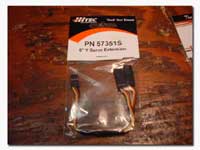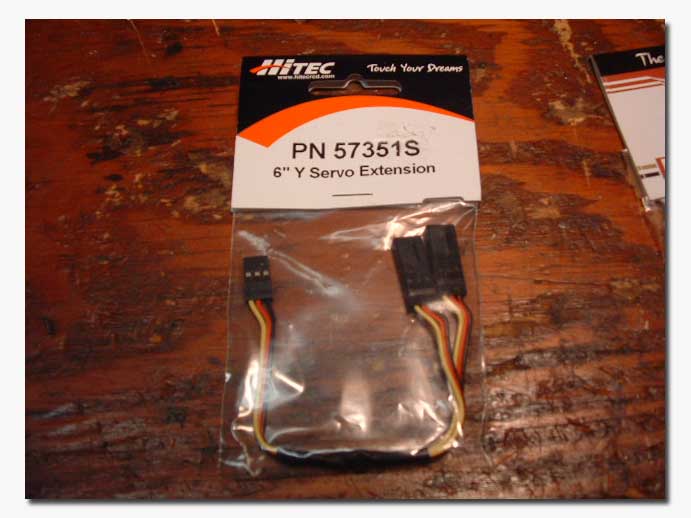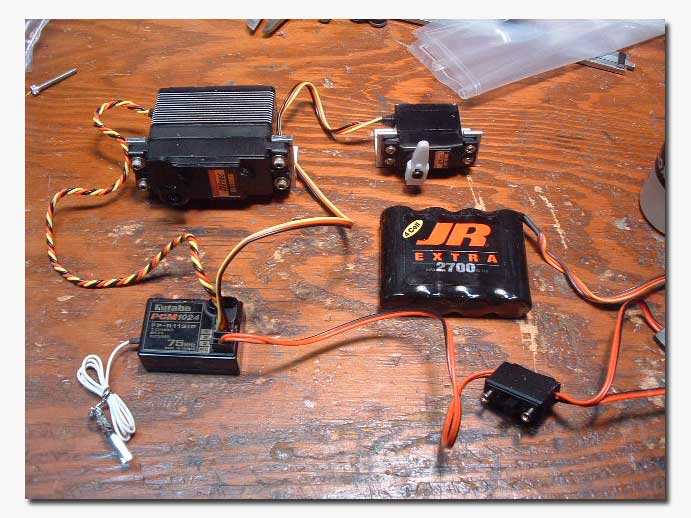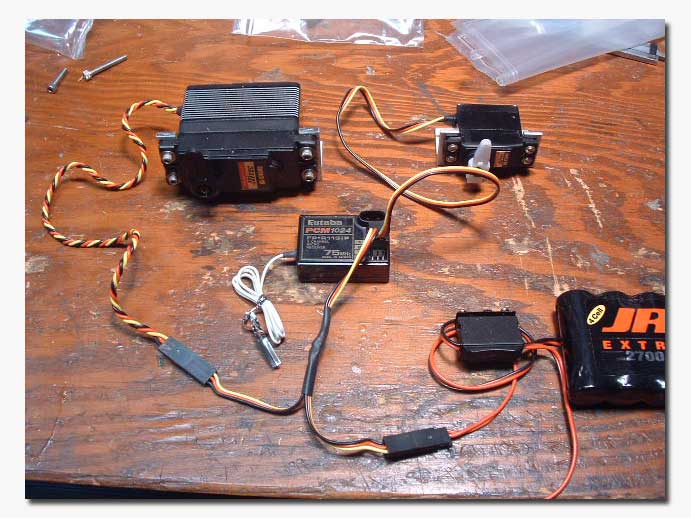Tech Article ...

Find out the advantages of using a Servo "Y" harness in your boat...
On most gas powered or large nitro and electric boats, steering requires additional torque that simply cannot be achieved with typical regular size servos. The use of ¼ scale or high torque digital servos is thus necessary. In some cases the extra current draw of these servos can create additional loads on the radio gear (particularly the receiver) for which these components were simply not designed. To get the most of your radio system, the use of a Servo "Y" Harness is recommended. In this article Scott explains the use and advantages of using the Servo "Y" Harness.
 A typical "Y" Harness
A typical "Y" Harness
 A typical 2 servo set up with battery and BOTH servos connected to a receiver.
A typical 2 servo set up with battery and BOTH servos connected to a receiver.
 The "Y" Harness installed.
The "Y" Harness installed.
** A "Y" harness is used when you have BIG or high power demand servos.
The Micro printed circuit board of a receiver cannot pass much current threw it because of the very small gauge wire (trace) on the circuit board.
With the receiver not being able to handle the current demands of the servo, the latter will be working far under its rated power.
** Most receivers have B.E.C circuits (battery eliminator circuitry) and will self regulate the output to the servos to 4.8 volts. (Also note they cannot pass the high current required **)
** Also as a high power demand is required by the servos, the voltage and available current keeping the receiver at max sensitivity will drop while the servo is "sucking all the juice" from the circuits, this in turn lessening the receiver's ability to "listen" accurately to the transmitter it's tuned to. In some cases damage can occur to both the receiver and the servos in severe cases of power starvation.
The "Y" harness is hooked into the receiver (typically steering) by doing away with battery power to the receiver connection completely. The lead from the switch that would normally go to the receiver now goes into one of the female connectors of the "Y" harness. The lead that comes from the servo to the receiver's servo plug now goes into the other female of "Y" harness... the male end of "Y" plugs into receiver slot to control that servo.
Now what happens is you are putting power to the receiver threw the servo plug at either 4.8 or 6.0 volts depending on the battery used. All the power pins of the receiver are on a common trace circuit so if you power up any plug location, you energize them all!
** The power from the "Y" harness will provide power to the receiver and throttle servo normally.
Now power is going to the servo directly from the battery, at battery voltage (4.8 or 6.0V) and the receiver does not have to handle the direct current required to power the BIG servo load.
System still turns off normally when the switch is turned off.
*** Safety note: MAKE SURE ALL POLARITY IS MAINTAINED on all connections.

